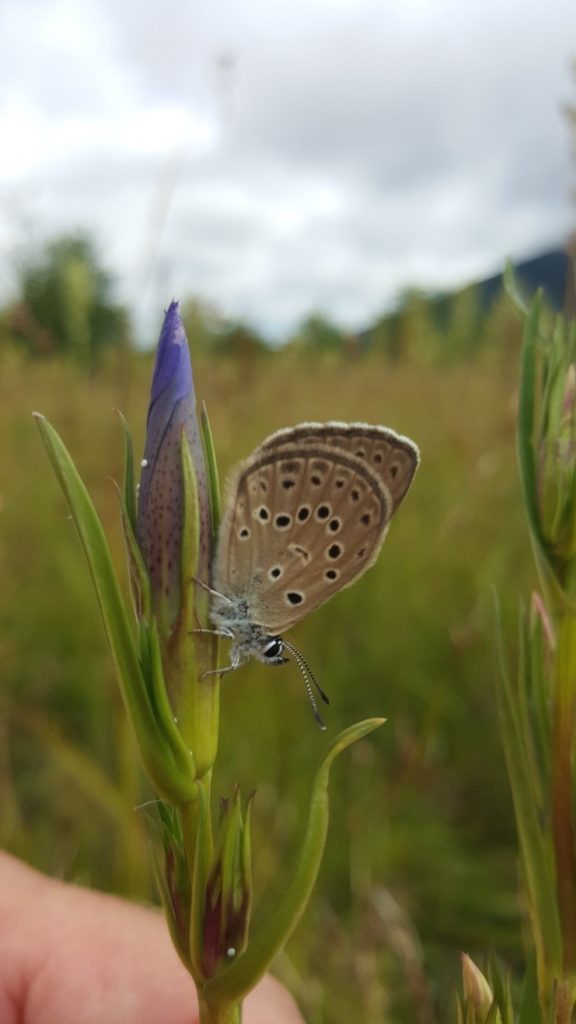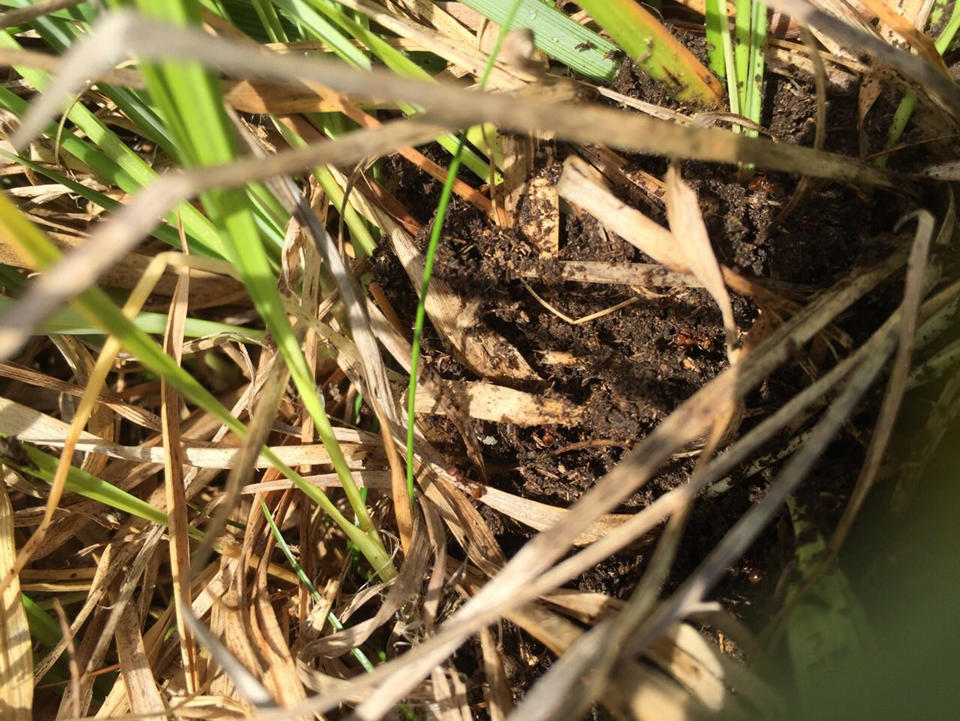On the wet meadows of the Plitvice Lakes National Park, a magical story unfolds year after year. Allow us to share it with you. It is a story about the butterfly known as the Alcon blue (Phengaris alcon alcon) and its coexistence with the ant and the plant of a strange name – the marsh gentian.
From the middle of July until the second half of August, the butterfly Phengaris alcon flies over the wet meadows of our Park and lays its eggs that look like small white dots on the marsh gentian (Gentiana pneumonanthe) (Photo 1). The eggs hatch into small larvae, which will feed and stay inside the flower bud of the marsh gentian for some time. After about three weeks, when the larvae become strong enough, they descend to the ground, near the anthills which the ants of the genus Myrmica cal their home (Photo 2). Because of the delicious juices the larva releases, these ants will take it inside their anthill and take care of it. The larvae spend seven to eight months in the anthill, and pupate near the opening of the anthill in the spring. In the summer months, when the marsh gentian blooms, in the early morning hours, beautiful blue-winged butterflies emerge from the anthills and begin their search of a plant on which to lay their eggs after fertilisation.
According to the criteria of the IUCN (International Union for Conservation of Nature), the Alcon blue is today one of the critically endangered species (category CR) because it is very sensitive to changes in its habitat due to its specific cycle.
It is precisely in our Park that one of the largest populations of this butterfly species, at the European level, has been recorded. It is our duty to protect it.
How will we do that?
By protecting and conserving their habitats with your help. The wet meadows where the Alcon blue is present, i.e. the butterfly, the ant and the plant (all three components must be present), must be mowed only in September, after the larva has descended into the anthill, and without the use of heavy machinery so as not to destroy the anthills. Also, no less important, it is necessary to conserve the natural water regime that keeps the meadows wet and suitable for the growth of the marsh gentian, for the anthills of the genus Myrmica and, finally, for the Alcon blue.
In cooperation with the Croatian Natural History Museum, the expert service of the Park continuously monitors the population of the Alcon blue in order to determine the current state and possible changes, as well as to facilitate cooperation with the owners of the meadows and make sure that the necessary measures are taken in a timely manner.
Apart from the Alcon blue, the Park is a habitat for two other vulnerable species of the genus Phengaris: Phengaris alcon rebeli (category EN) and Phengaris arion (category DD), with some other species having also been recorded. One of the common species is the European common blue (Polyommatus icarus).
Read other interesting stories from the Plitvice Lakes National Park



